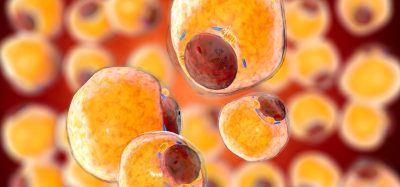Nanobubbles show promise for delivering anti-inflammation treatments
Posted: 8 October 2021 | Anna Begley (Drug Target Review) | No comments yet
Nanobubbles known as extracellular vesicles (EVs) were shown to deliver protein drugs in animal models with inflammatory diseases.


A new study from the Karolinska Institutet, Sweden, has showed that nanobubbles called extracellular vesicles (EVs) can efficiently transport protein drugs that reduce inflammation from a range of diseases, such as multiple sclerosis (MS) and inflammatory bowel disease (IBD), into animal models.
EVs are important in intercellular communication as carriers of biological signals. They are nanometre-sized membrane-coated packages excreted by cells that can deliver fatty acids, proteins and genetic material to different tissues. The tiny bubbles are found naturally in bodily fluids, are able to pass through biological barriers, like the blood-brain barrier and can be used as natural carriers of therapeutic substances. Consequently, EVs have garnered growing interest as potential drugs.
In this study, published in Nature Biomedical Engineering, the researchers coated the outer EV membrane with therapeutic proteins more precisely receptors that bind to the inflammatory substances TNF-α and interleukin 6 (IL6) using biomolecular techniques. TNF-α and IL6 form in the body under inflammatory conditions such as MS and IBD and play a key part in inflammation and the subsequent tissue damage. This knowledge has resulted in the development of biological drugs that dampen the inflammatory response by inhibiting TNF-α and IL6.
The researchers tried to inhibit the inflammatory substances using therapeutic EVs that express on their membranes the receptors that bind to IL6 and TNF-α. “We used different methods to optimise the expression of receptors and tested the different variants of EVs in inflammatory cell models to identify which strategy gave the greatest anti-inflammatory effect,” explained joint first author Dhanu Gupta.
The team then examined the effects of therapeutic EVs in three relevant inflammatory animal models for sepsis, MS and IBD. In the animal model for sepsis, treatment significantly improved survival, suggesting a successful dampening of the inflammatory response.
Scientists create cellular blueprint of multiple sclerosis lesions – READ HERE
In the MS model, the researchers also found a significant reduction in the neurological symptoms seen in MS flare-ups. Treatment with EVs expressing both receptors also showed a significant increase in survival in mouse models for IBD.
“Our findings are an important step in the right direction and demonstrate that EVs can be a promising treatment for inflammation, but the technique also has great potential for many other diseases,” concluded joint last author Samir Andaloussi.
Related topics
Drug Delivery, In Vivo, Molecular Biology, Molecular Targets, Nanomedicine, Protein, Small Molecules, Therapeutics
Related conditions
Inflammatory bowel disease (IBD), Multiple Sclerosis (MS), Sepsis
Related organisations
Karolinska Instituet
Related people
Dhanu Gupta, Samir Andaloussi








